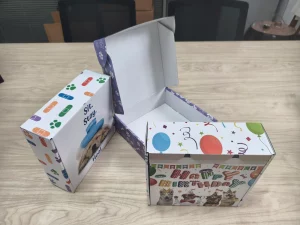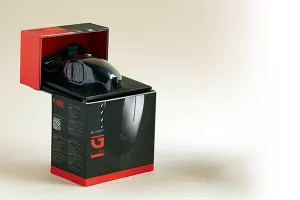I’ve noticed a growing confusion about retail packaging in today’s market. As someone who’s helped countless brands develop their packaging solutions, I understand the importance of getting this right.
Retail packaging is the final protective and promotional container that displays products directly to consumers in stores. It combines product protection, brand messaging, and sales appeal, making it crucial for successful retail merchandising and brand recognition.

Let me share my insights from years of experience in the packaging industry to help you understand everything you need to know about retail packaging and its impact on your business success.
What is the Difference Between Retail Packaging and Non-Retail Packaging?
Every week, I encounter business owners who are confused about choosing between retail and non-retail packaging. This choice can significantly impact their product’s success in the market.
The main difference lies in their primary purposes: retail packaging is designed to attract consumers and promote sales, while non-retail packaging focuses purely on product protection during storage and shipping.

Key Distinctions Between Retail and Non-Retail Packaging
| Característica | Embalaje para venta minorista | Non-Retail Packaging |
|---|---|---|
| Primary Purpose | Marketing and sales | Protection and storage |
| Design Focus | Visual appeal and branding | Durability and efficiency |
| Information Display | Detailed product info, branding | Basic handling instructions |
| Coste | Higher due to design elements | Lower, focused on functionality |
| Materials Used | Premium, visually attractive | Basic, sturdy materials |
I’ve seen firsthand how retail packaging demands more attention to aesthetic details. For example, when I worked with a cosmetics brand, we spent considerable time selecting the right finish for their boxes to ensure they stood out on store shelves. The packaging needed special coatings, precise color matching, and strategic placement of brand elements.
In contrast, non-retail packaging1 prioritizes practicality. I remember a project for bulk shipping containers where the focus was entirely on protecting the products during transportation. We used simple brown corrugated boxes with minimal printing, focusing instead on structural integrity and stackability.
The material selection process also differs significantly. Retail packaging often incorporates special finishes like spot UV, embossing, or foil stamping to catch the consumer’s eye. Non-envasado al por menor2 typically uses standard materials like plain cardboard or basic plastic wrap, designed purely for protection.
What is Considered Non-Bulk Packaging?
Many of my clients struggle with understanding non-bulk packaging requirements, especially when transitioning from wholesale to retail markets.
Non-bulk packaging refers to smaller, individual units designed for single product sales, typically containing quantities intended for individual consumer use rather than wholesale distribution.
Understanding Non-Bulk Packaging Categories
| Type | Typical Use | Common Examples |
|---|---|---|
| Envases primarios | Direct product contact | Bottles, jars, tubes |
| Embalaje secundario | Product grouping | Cartons, display boxes |
| Unit Packaging | Individual sales | Single-item containers |
From my experience working with various retailers, non-bulk packaging serves multiple crucial functions. I recently helped a startup food company develop their non-bulk packaging strategy. We focused on creating packages that would protect individual servings while making the product easy to display and attractive to consumers.
The key considerations for non-bulk packaging include portion control, ease of handling, and consumer convenience. For instance, when designing packaging for a premium chocolate brand, we created individual wrappings that not only protected each piece but also enhanced the luxury experience of unwrapping the product.
Storage efficiency is another critical factor. I’ve worked with retailers who needed non-bulk packaging that could maximize shelf space while maintaining product visibility. This led to innovative solutions like stackable containers with clear viewing windows.
The environmental impact of non-bulk packaging is increasingly important. Many of my recent projects have involved developing soluciones sostenibles3 that minimize waste while maintaining the necessary protection and appeal for individual unit sales.
Conclusión
Understanding these packaging distinctions is crucial for business success. From my experience, choosing the right packaging type directly impacts your product’s market performance, storage efficiency, and customer satisfaction.
-
Discover the practical aspects of non-retail packaging, focusing on protection and efficiency in shipping and storage. ↩
-
Explore this link to understand how retail packaging enhances product visibility and consumer appeal, crucial for brand success. ↩
-
Discover innovative sustainable packaging solutions that reduce waste and improve consumer appeal. ↩








